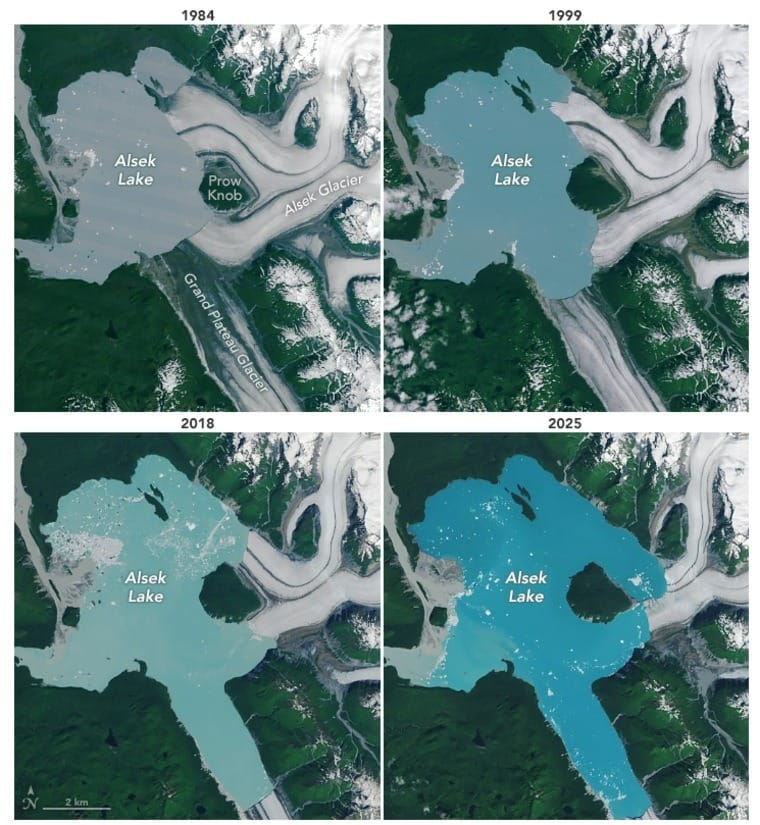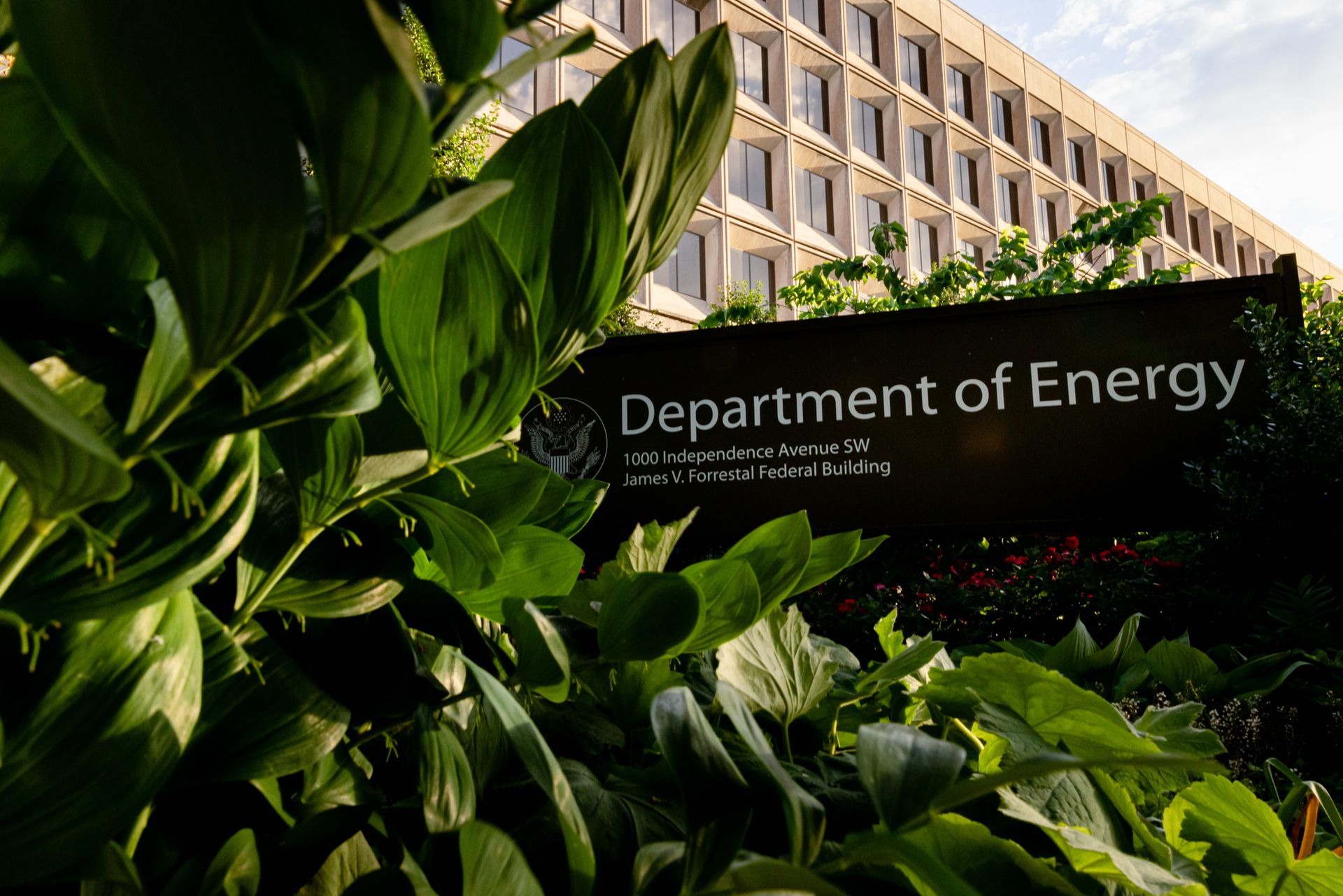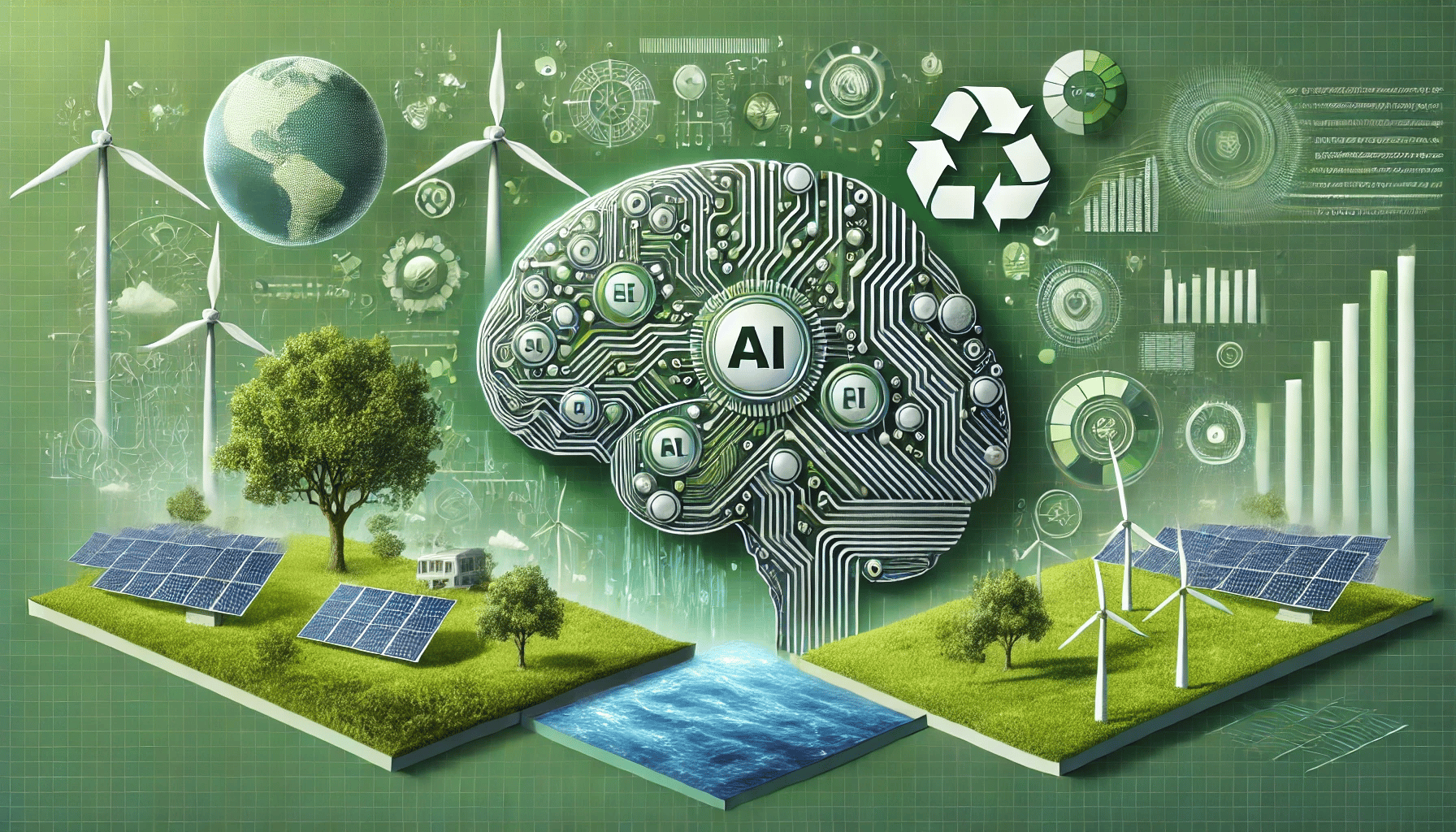- Barrington Environmental Establishment Newsletter
- Posts
- BEE Newsletter - Oct 11, 2025
BEE Newsletter - Oct 11, 2025
Leave the leaves
Recent Events

Melting Glacier in Alaska Creates New Island
In southeastern Alaska, satellite images are revealing that a melting glacier has resulted in the formation of a new island in the middle of a lake. This new island, a two square-mile mountain called Prow Knob, was once located directly next to the Alsek Lake and was otherwise fully surrounded by the Alsek Glacier. However, as temperatures increased due to climate change, the Alsek Glacier thawed and retreated, causing meltwater to flood the region.
The melting of glaciers due to climate change is a self-perpetuating process. Glaciers and other large bodies of ice reflect much of the sunlight that hits Arctic areas, thereby lowering the temperature of the surface of Earth. However, when glaciers melt due to global warming, less sunlight is reflected and more of it is absorbed, which further warms the Earth’s surface and further contributes to global warming. Thus, it is a positive feedback loop, as the result only serves to exacerbate the underlying cause even more.
Now, Alsek Lake has expanded to fill the voids once filled by the Grand Plateau Glacier and the Alsek Glacier, including the parts of it that surrounded Prow Knob. This process of meltwater runoff flowing into a glacier basin forms what is known as a “proglacial lake.” Consequently, the size of Alsek Lake has almost doubled in size since 1984, and satellites are now showing what has been inevitable for decades: Prow Knob has become completely surrounded by the new territory of Alsek Lake. NASA estimated that the separation had occurred sometime between July 13 and August 6th.
Along with this, even more melting of the glaciers is expected in the following years. This is because of the positive feedback loop with melting ice, as well as the fact that the ice is now less stable after fully detaching from Prow Knob. This situation is a prime example of how climate change continues to alter the Earth’s landscapes in dramatic ways.

Consensus Among Scientists that Energy Department Climate Report Lacks Merit
In July, the Trump Administration released a climate assessment that was used to justify a loosening of federal restrictions on greenhouse gases. Since then, a group of over 85 top climate scientists led by professors Andrew Dessler of Texas A&M University and Robert Kopp of Rutgers University have rebuked this assessment, releasing an over-400 page review of the report. The DOE’s assessment, written by scientists selected by Secretary of Energy Chris Wright, completely “fails to adequately represent the current scientific understanding of climate change,” according to the review. The review also states that the Energy Department’s report heavily relied on debunked research, misinterpreted other studies, and failed to undergo a peer-review process to ensure its credibility. Additionally, other climate reports such as ones done by the Intergovernmental Panel on Climate Change and the US National Climate Assessment have far more authors and contributors, and relentless peer-review to ensure reliability. These reports fit the overwhelming consensus on climate change: that it’s worsening at unprecedented rates, with far-reaching consequences. All of these facts together have made scientists and the general public suspicious that the Department of Energy is not set out to reach the truth or engage in thoughtful discussion, but simply to present cherrypicked evidence to advance a political agenda.
Artificial Intelligence and the Environment

It’s safe to say that all of us have used artificial intelligence (AI) at some point in our lives. Whether it be to ask a question that we are unsure about, or help us in accomplishing a task at either a workplace or school, AI has likely played some sort of role. In fact, when looking up what some statistics were about AI usage across the world, the very first thing that popped up on Google's search engine was its Gemini AI review of the subject. It is estimated that 77% of devices being used have some form of AI. Even if people are not willingly using AI, the applications on the internet that people often use incorporate AI in some sort of way. This begs the question: how does AI affect the environment?
When looking at the effects of AI on the environment, it should first be noted that there is no one clear, definitive answer on whether AI is good or bad for the environment. As you will soon see, there are many pros and cons associated with the increased use of artificial intelligence. Let’s start by examining some of the negative effects of AI on the environment. For starters, running extremely powerful AI systems requires their data systems to extract huge amounts of energy. In 2025, data centers consume 4.4% of all U.S. energy, with the electricity used being a lot more carbon-intensive than the U.S. average. The shocker comes when it is realized that even trivial searches or uses of artificial intelligence still require immense amounts of energy. Part of the reason why there is no definitive answer to how much energy is being spent on different search queries using AI is because of the many variables that are associated with tracking the energy usage of AI. Since there are countless scenarios and companies do not often disclose what their AI emissions are, it makes it even harder to attain a true understanding of how AI and energy are related to each other. Additionally, some studies estimate that only 15 Chat-GPT searches are needed to use half a liter of water to cool off the huge data centers that are using a lot of computational power and high-speed networking. Paired with the fact that two-thirds of new data center facilities are being built in regions that have water scarcity, justifying the benefits of artificial intelligence can be extremely challenging. But what are some of the benefits that AI usage can bring in addressing climate change and environmental impacts?
The main benefits of artificial intelligence in regards to climate change include the complex tracking of extreme weather and the ability to help optimize many of the natural resources that are being used today. Even though AI cannot do anything that will stop climate change directly, advanced models that are being used give humans a better understanding of what is happening on our planet, as well as weather events that will happen in the future. This knowledge helps those who respond to climate change have a better understanding of what is happening, and this allows them to protect more people. One of the biggest downsides that was mentioned earlier about AI was the energy consumption needed to run complex computational systems. However, an article written by Yale Climate Connections says that AI systems can help themselves by being used to “simulate wind patterns and building performance, improve electric grid efficiency, and enable better renewable integration, potentially save much more energy than they consume.” If utilized properly, AI itself can help mitigate the effects of the amount of energy that it uses by optimizing energy resources that society already has. Additionally, AI has begun to show emerging uses in the medical field, with specific accuracy on datasets such as MRI scans, improvements in farming that help to better current uses of fertilizer and water, and many other things too!
The pros and cons mentioned above only scratch the surface of the extremely complex effects that artificial intelligence has on our world and the environment. Ultimately, AI has the potential to help humans in combating the ever-changing climate of the world we live in, but that is only if it is used properly. AI models can hallucinate and give extremely confident outputs that may be false. If it is not managed properly, many of the benefits mentioned earlier for AI can end up being consequences if there is no way to confirm the validity of the output that AI provides. Ultimately, whether AI is good or bad for the environment is not a question that can be answered with 100% certainty right now. AI has the potential to be instrumental in making breakthroughs to many of the problems that we face now, but using it too much to help with the simple tasks in our lives is likely not the best use of its abilities.
Tips: Making environmentally-friendly art

One fantastic way to spread environmental awareness is by making environmental art! Even better if you can do it in an environmentally friendly way. Here are some tips:
Use hemp or flax art surfaces (such as art canvases) instead of traditional canvas for a smaller ecological footprint in terms of land and water.
Use tempera paint instead of acrylic paint - it’s cheaper and more environmentally friendly.
Instead of using turpentine as an oil painting solvent, use walnut oil or linseed oil. Turpentine emits volatile organic compounds (bad for the environment) as it dries.
Consider using secondhand or upcycled painting materials from local sources. By using secondhand or found materials, you reduce the footprint of your art.
Also, consider making environment-inspired art! By creating art that highlights (for example) the issue of litter in the environment by incorporating litter, you can practice activism in a creative and rewarding way. Artists have also made popular and successful pieces on issues ranging from coral bleaching to failing irrigation systems.
Try making some environmental and environmentally friendly art today!